#henri romain
Explore tagged Tumblr posts
Text



hell
illustration accompanying the "compendium historial" by henri romain, paris, c. 1475
source: Genève, Bibliothèque de Genève, Ms. fr. 79, fol. 473r
283 notes
·
View notes
Text
youtube
Taxi Kebab - Ardina
#taxi kebab#ardina#leïla jiqqir#romain henry#electronic#post punk#electropunk#coldwave#synthpop#visions al 2ard#2022
7 notes
·
View notes
Text
Here's all the people who stepped down within 24 hours of Diddy's arrest. Figured this community would appreciate this cross posted tea
Kevin Liles (Music Exec)
Eric Pryor (President of Fine Arts)
Johnathan Halloway (Rutgers President)
Robert B. Davis (General Manager of Martha's Vineyard)
Chris Cameron (LaCrosse Coach)
Kathy Newsham (Bay City Mayor)
LaMonica McIver (Newark City Councilman)
Allyson Green (Tisch Dean)
Craig Maladra (5th Ward Geneva)
Joseph Kerschner (Doctor)
Mike Foster (President of Nexian Travel)
Suzi Williams (Executive Director)
Romain Mazeries (CEO)
Henry Leventis (Chief Prosecutor)
Matthew Teitelbaum (MFA Director)
Darren Lehmann (Assistant Coach)
Arvind Kejriwal (Chief Minister)
Giuseppe N. Colasurdo (Doctor UTH) ~Not Damning But Peculiar
Source: https://x.com/Prolotario1/status/1836124942607302883
NYC DA stepped down as well: https://www.msn.com/en-us/news/us/top-legal-adviser-to-new-york-city-mayor-quits-as-investigations-swell/ar-AA1qCnMV
NYPD Commissioner too: https://apnews.com/article/nypd-commissioner-resignation-federal-investigation-edward-caban-670388e653bc2d9bd19b7e7e9638e80d
Just keeping this here for archive sake, in case anyone knows these names and can use them for further research.
Reddit Source HERE
#puff daddy#p diddy#sean diddy combs#sean combs#rappers#oprah#q diddy#diddy kong#diddy#Mike Foster#Kevin Liles#Eric Pryor#President of Fine Arts#Johnathan Halloway#Rutgers President#Robert B. Davis#Chris Cameron#Kathy Newsham#Bay City Mayor#LaMonica McIver#Newark City Councilman#Allyson Green#Craig Maladra#5th Ward Geneva#Joseph Kerschner#President of Nexian Travel#Suzi Williams#Romain Mazeries#Henry Leventis#Matthew Teitelbaum
5 notes
·
View notes
Text

Patrick Dewaere (en haut), Miou-Miou, Jean-Michel Haas, Henri Guybet, Romain Bouteille, Gérard Lefèvre, Coluche, Catherine Mitry et Sotha (de gauche à droite) au Café de la Gare, Paris, Septembre 1969.
#patrick dewaere#Miou-Miou#Jean-Michel Haas#Henri Guybet#Romain Bouteille#Gérard Lefèvre#Coluche#Catherine Mitry#sotha#1969
6 notes
·
View notes
Text
His first feeling of attraction and admiration for the formidable power of the young republic had faded. Vivekananda almost at once fell foul of the brutality, the in-humanity, the littleness of spirit, the narrow fanaticism, the monumental ignorance, the crushing incomprehension, so frank and sure of itself with regard to all who thought, who believed, who regarded life differently from the paragon nation of the human race . . . And so he had no patience. He hid nothing. He stigmatised the vices and crimes of the Western civilisation with its characteristics of violence, pillage and destruction. Once when he was to speak at Boston on a beautiful religious subject particularly dear to him (Ramakrishna), he felt such repulsion at the sight of his audience, the artificial and cruel crowd of men of affairs and of the world, that he refused to yield them the key of his sanctuary, and brusquely changing the subject, he inveighed furiously against a civilisation represented by such foxes and wolves. The scandal was terrific. Hundreds noisily left the hall and the Press was furious. He was especially bitter against false Christianity and religious hypocrisy: "With all your brag and boasting, where has your Christianity succeeded without the sword? Yours is a religion preached in the name of luxury. It is all hypocrisy that I have heard in this country. All this prosperity, all this from Christ! Those who call upon Christ care nothing but to amass riches! Christ would not find a stone on which to lay his head among you . . . You are not Christians. Return to Christ!"
Henry Miller (quoting Romain Rolland) ֍ The Air-Conditioned Nightmare (1945)
#where has your christianity succeeded without the sword?#a religion preached in the name of luxury#henry miller#romain rolland#the air-conditioned nightmare#bookshelf#quotes#fav
3 notes
·
View notes
Text
[RIG 2024] En Argentine, Milei fait tanguer les médias
Plus de 250 % d’inflation, réduction drastique du nombre d’emplois dans le service public, perte de 11 places au classement Reporters sans frontières… En Argentine, les défis sont nombreux. Ce cocktail explosif de tensions auquel est exposée la population argentine a débouché en novembre dernier sur l’élection de Javier Milei, ancien économiste et “anarcho-capitaliste”. Près de 6 mois après son…

View On WordPress
#Argentine#Aurélian MARRE#Aurélien Dufour#économie#élections#Chloé BACH CHAOUCH#droits#Elsa Simler#Eulalie Mérel#Flavie VEILLAS#Javier Milei#journalisme#liberté de la presse#médias#politique#RIG#Romain Henry
1 note
·
View note
Text
Jean-Pierre Maeren wordt 65...
Poppenspeler, poppenmaker, scenograaf, televisievedette Jean-Pierre Maeren (foto YouTube) viert vandaag zijn 65ste verjaardag… Continue reading Untitled

View On WordPress
#chris van den durpel#Henri Van Daele#Jean-Pierre Maeren#Romain Deconinck#Rosa Geinger#Yvonne Delcour
0 notes
Text
Fancy Women in 30s Evening Gowns: A Selection of Portraits and a Gown

Maggy Rouff, designer • Evening dress in white Romaine crepe • 1931


Right: Albert Henry Collings (1868-1947) • Portrait of a Lady in an Evening Dress • 1930s
Left: George Spencer Watson (British, 1869 - 1934) • Dorothy • 1929

Alfred Reginald Thomson (British, 1894-1979) • Portrait of Mrs Vivienne Hilliard • 1934


Yellow Satin Evening Gown • 1930s • Augusta Auctions


Gerda Wegener (Danish, 1886 - 1940)
#art#painting#society portraits#art history#women's fashion history#fashion history#1930s fashion#1930s evening gowns#1930s fashion plate#gerda wegener#alfred reginald thomson#albert henry collings#john spencer watson#the resplendent outfit fashion/art blog
54 notes
·
View notes
Text
According to an August report from the Russian state news agency TASS, the Kremlin plans to become a “safe haven for people trying to escape Western liberal ideals.” To this end, Russia will introduce a new visa pathway for foreigners fleeing countries whose policies run contrary to “traditional Russian spiritual and moral values.” The report, although sparse on detail, claims that three-month visas may be issued for these spiritual refugees as early as last month. Discussion of the policy in the Russian information sphere has been colored by visions of Moscow as the leader of a future world in which so-called traditional values can thrive. Indeed, the idea for the policy was allegedly voiced to Russian President Vladimir Putin by an Italian university student during a virtual forum titled Strong Ideas for a New Time.
On the surface, Moscow appears to be resuscitating the old Soviet practice of painting itself as the center of resistance against the West. Back then, it was against capitalism; today it is against the West’s supposed liberal decadence. But there is something thoroughly 21st century in the new rhetoric and policies. The visa plan is the latest in a series of public relations measures designed to challenge the nature of borders in an increasingly digital world. The regime is not seriously looking to attract immigrants and seems unembarrassed by the paltry numbers of Westerners taking up the offer. It is looking to strengthen its virtual coalition of fellow travelers—a maneuver that has dangerous implications for liberal nation-states seeking to counter the Kremlin’s influence.
At home, Russia’s vision of “traditional values” consists of a draconian web of pro-Russian Orthodox, misogynist, and anti-LGBTQ+ laws, as well as the teaching of a mythologized history imbued with a cult of masculine, military strength. Frequently, these policies are driven by conspiracy theories as much as any state ideology. More often than not, they simply rail against anything Russia associates with Western liberalism. Whatever trends prevail in progressive Western society, from trans-positive messaging to support for Black Lives Matter, is decried as anti-Russian and antithetical to “traditional values.” In this sense, Russia’s campaign in support of its alleged values is a project rooted in the country’s relationship with the outside.
Indeed, defending “traditional values” is at the center of the Putin regime’s domestic and foreign policy. The Kremlin’s updated 2023 National Security Concept mentions “tradition” no fewer than 16 times, claiming that “a wide-spread form of interference in the internal affairs of sovereign states has become the imposition of destructive neoliberal ideological attitudes that run counter to traditional spiritual and moral values.” Moscow has anointed itself the leader of “international efforts to ensure respect for and protection of universal and traditional spiritual and moral values.” Russia seeks to weave support for “traditional values” into its policies abroad by funding sympathetic far-right groups across Europe and North America and by linking economic and security policy to the defense of values in international forums.
Moscow’s history of proclaiming itself as the center of an international political vanguard dates to the early Bolshevik era. Throughout the 1920s and 1930s, Soviet propagandists told their citizens that they were “the greatest internationalists” in the world and that Westerners were flocking to seek refuge in the fledgling Soviet Union. The state did plenty to attract both sympathizers and industrial specialists to its territory.
A series of high-profile Western leftists were treated to Potemkin tours; among those who visited in the 1930s were George Bernard Shaw, André Gide, Henri Barbusse, and Romain Rolland. Shaw, who was granted a private audience with Joseph Stalin on his visit in 1931, lauded Russia as the home of a spiritual resurrection that would rectify the social ills he saw in the West. He would later write to the Soviet author Maxim Gorky that he was “as strongly susceptible as anyone to the fascination of the Russian character.” Shaw was fascinated with the idea of Russia not as it was, but as an antithesis to the West: a mystical place where his own dreams could be realized.
More often, though, illusions were shattered. Gide was thoroughly disheartened by his own visit to the Soviet Union. Appalled by the lack of freedom of speech, the uniformity of opinion in Pravda, and the climate of fear, he wrote: “I doubt whether in any other country in the world, even Hitler’s Germany, thought be less free, more bowed down, more fearful (terrorized), more vassalized.” Fellow intellectuals who tried living in the Soviet Union, such as the anarchists Alexander Berkman and Emma Goldman, reacted even more strongly, publishing works that violently decried the persecution of the early Soviet era and fleeing within months.
Meanwhile, the ordinary leftist refugees, workers, and students who continued to immigrate to the Soviet Union from various capitalist countries tended to leave as disgruntled as they arrived and typically went home as soon as hard currency or other special support from the Kremlin dried up. As foreigners, they were also under permanent suspicion, and many disappeared in the Gulag. Despite its grandiose claims, Moscow was never an appealing destination for many foreign fellow travelers—especially once they experienced the reality of Soviet life.
Recent publicity tours in Putin’s Russia mirror the early celebrity visits to the Soviet Union—although today’s visitors tend to share Shaw’s excitement, not Gide’s revulsion, about life in Moscow’s realm. Right-wing provocateurs such as Jackson Hinkle and, most famously, Tucker Carlson have popped up in Moscow to record adulatory videos for their vast online audiences. Carlson, who posted clips of an interview he conducted with Putin this year, claimed to have been “radicalized” by his trip to Moscow. His video diaries depicted a world of fully stocked grocery stores, immaculate subway stations, and grandiose performances at the Bolshoi Theater. Even Tasty, Full Stop, the copycat McDonald’s that sprung up after the fast food giant’s departure from Russia in 2022, won Carlson’s approval.
Carlson’s Russia seems to be nothing but propaganda: the depiction of a fake world, untarnished by the poverty and violence that is endemic in Russian society. Yet Carlson carefully crafted an image of a Russia that is, essentially, a Disneyfied America: Here was a rich white man treated like royalty and able to access every aspect of an idealized American life—even McDonald’s—in a society shorn of the perceived messiness of today’s America, and especially of its supposedly deleterious progressive values. Like Shaw, then, Carlson projected onto Russia the hyperreality of a desired homeland: the dream America of the MAGA brigade. Moscow’s behavior on the international stage may challenge Washington’s geopolitical supremacy, but its “traditional values” rhetoric functions as an escapist simulation.
Today’s online proponents of “traditional values”—whether in the United States, Hungary, Austria or elsewhere—can thus react enthusiastically to Russia’s plans to welcome them as immigrants, even if they have no intention of ever moving to the country. In response to the policy announcement, Alex Jones, the bankrupted Infowars founder, encouraged “true patriots” to “stand up for spiritual and moral values” in a post on X. On Truth Social, the right-wing social network founded by former U.S. President Donald Trump, Moscow’s plan was met with enthusiasm—not for Russia as some sort of conservative utopia, but for the rejection of cultural traits associated with progressive America. The fantasy of Russia as the “new America,” as one Truth user put it, provides the raw material for bonding around conspiracy theories and anti-progressivism from the comfort of home—and makes it possible for self-styled patriots to sympathize more with Russia than with their own country.
Only a handful of fellow travelers on the traditional values ticket have attempted to make the move to Russia. While the Russian state has recently trumpeted an American family’s escape from “the dissolution of traditional moral and family values,” the experience of other recent arrivals has left them desperate to “jump on a plane and get out of here.” Russian authorities do little to help with schooling, jobs, language training, and so on—and claims of bold projects to house incoming foreigners turn out to be little more than amplified rumors. Presumably the latest policy announcement will be another element of simulated reality: the creation of the idea of Russia as the home of traditional values without anything to back up that vision.
However, when 21st-century fellow travelers are able to bond over and amplify their visions of Russia as the new America in the online world, Russia’s approach may turn out to be more than an easily debunked PR scheme. Pravda’s monotonous reel of uniform opinions shocked Gide, but today’s Russia sympathizers are more likely to be found in polarized social bubbles where the order of the day is conformity, not plurality, of opinion. Unlike their 1930s predecessors, who could not get a sense of Soviet reality from abroad, today’s fellow travelers have Russian reality at their fingertips—if they care to look. This includes thousands of hours of footage of war crimes, evidence of widespread oppression of dissenting voices, and accounts of the systematic repression of religious believers outside the Kremlin-controlled Russian Orthodox Church.
Yet in the fragmented world of social media, where anyone can live in their own self-constructed reality, the disaffected are able to project an imagined anti-liberal vision of reality onto Russia. In the United States, this culminates in MAGA voters giving a higher approval rating to Putin than to their own president, something that was unimaginable in the 20th century outside a tiny, politically irrelevant fringe. Parties that have aligned themselves with the rhetoric of “traditional values” have enjoyed real successes across Europe, including recently in France and Austria, and the MAGA movement may yet carry Trump back into the White House. Russia’s “traditional values” project may not win it a war or generate an influx of migrants, but it has a clear effect on other countries’ politics.
Most analysts consider Russia’s dream of creating a multipolar world in which its territorial, economic, and military might acts as a counterpoint to U.S. or Chinese hegemony a fantasy. Equally outlandish is the idea, much propagated by Russian nationalists, of a new Eurasian empire—or even, given Russia’s depleting strength, reuniting Ukraine, Belarus, and today’s Russian Federation into a “Great Russia.” But analysis that overemphasizes the physical over the virtual—or dismisses online movements as mere propaganda and trolling—fails to recognize 21st-century realities.
The most important future clash of civilizations is not based on geography. Instead, we are beginning to see the creation of virtual civilizations: boundary-less political allegiances defined by amorphous and fluid values perpetuated through the internet. Citizens with similar affinities in Russia, the United States, France, Germany, and wherever find themselves having more in common—and spending more time—with each other than with their own compatriots who don’t share their political views. Putin’s Russia may not be about to conquer Ukraine or create a multipolar world order, but it is working to reorder political identities by encouraging foreigners to view Moscow as a simulated realization of their own political dreams.
15 notes
·
View notes
Text

Henri Matisse, La Blouse Romaine, 1940
#henri matisse#fauvism#fauvist#les fauves#french art#french artist#french painter#french painting#portrait#portrait painting#artist portrait#portraiture#modern art#art history#aesthetictumblr#tumblraesthetic#tumblrpic#tumblrpictures#tumblr art#aesthetic#tumblrstyle#beauty
32 notes
·
View notes
Text
Südengland 2024 - Tag 26
Ladies and Gentlemen!
Als erster Punkt stehen heute der Under Oak Archway und der The Tall Trees Trail auf der Agenda.

Doch bevor es soweit ist und wir dort ankommen, werden wir unterwegs völlig unverhofft von einer Fohlengeburt aufgehalten.

Damit hätten wir ja nun wirklich in unserem ganzen Leben niemals gerechnet, dass wir am späten Morgen Zeugen davon werden könnten.

Und dann auch noch direkt neben der Straße. Toll!

Eigentlich sieht der kleine Pimpf mehr wie ein Esel aus.

Nach dieser Überraschung fahren wir weiter bis zum Blackwater car park. Der Rhinefield Ornamental Drive zieht sich doch ziemlich durch den dichten Wald.

Der Parkplatz Blackwater Arboretum ist barrierefrei und verfügt auch über barrierefreie Toilettenanlagen. Zusätzlich zu einem Informationspunkt und Picknick Tischen sowie der obligatorischen Kaffeebude.

Diese Walks führen an majestätischen Nadelbäumen vorbei. Blackwater hat einige der ältesten und auffälligsten Bäume im gesamten New Forest.

Diese wurde 1859 von John E. Nelson, dem leitenden Gärtner des New Forest, gepflanzt, der auch für die Bepflanzung des Rhinefield Ornamental Drive verantwortlich war.

An dem Rundweg finden sich geschnitzte Skulpturen, die die Samen der verschiedenen Baumarten darstellen.

Nach dem Ausflug ins Grüne steht uns jetzt eine kleine Stärkung zu. Natürlich wieder einen Afternoon Tea. Dazu haben wir uns dieses Mal ein ganz besonderes Ambiente ausgesucht: das Rhinefield House.

Das Rhinefield House liegt am Ende einer Zierallee aus riesigen Mammutbäumen, die von farbenfrohen Azaleen und Rhododendren gesäumt sind.

Beeindruckender geht´s fast nicht. Versteckt im Wald, wenn man schon fast glaubt, hier kommt kein Hotel mehr, sieht man das Hinweisschild und ist tatsächlich am Ziel.
Das Haus steht auf einer Anhöhe auf einer Lichtung in Clumber Inclosure und die Gärten sind von den Plantagen und Heideflächen des New Forest umgeben.

Vom Haus aus hat man einen Blick über die Gärten nach Süden, Westen und Osten, mit Fernblick auf die Heidelandschaft des New Forest. Die östliche Grenze des Geländes liegt an der Straße von Brockenhurst nach Rhinefield.

Auf dem Gelände des heutigen Anwesens soll die englische Krone schon seit vielen hundert Jahren eine Jagdresidenz (die „Great Rhinefield Lodge“) unterhalten haben und sicherlich war Rhinefield im späten 18. Jahrhundert als Wildpark bekannt.
In seiner heutigen Form wurde das Rhinefield House im Jahre 1877, im viktorianischen Stil mit gemischten Tudor-Elementen, von der Familie Walker errichtet.

Durch Kohlengruben in Eastwood war die Familie zu einem beträchtlichen Vermögen gekommen.
Das königliche Land, auf dem das Anwesen steht, verpachtete die Königin für 99 Jahre an die Familie Walker. Das Rhinefield House galt als Mitgift für die Tochter des Hauses, Romaine Walker-Munro.

Rhinefield sollte den Status von Miss Mabel Walker widerspiegeln: Zum Zeitpunkt des Baus des Hauses galt sie als eine der reichsten Frauen Englands.

Nach ihrer Heirat mit Lieutenant Commander Munro unternahm das Paar eine „Grand Tour“ für die Flitterwochen und soll viele Architekturstile bewundert haben, die sie in Rhinefield House integriert haben.
Darunter eine Reihe französischer Innenräume im Louis-Stil und eine große Halle mit Hammerbalkendach und ein Raucherzimmer im maurischen Stil aus der Alhambra.

Schon kurz nach Fertigstellung des Hauses ließen sie einen großen Englischen Garten im Viktorianischen Stil auf dem Anwesen anlegen.
Miss Walker beauftragte William Henry Romaine-Walker (1854–1940) mit dem Bau. Rhinefield war der erste Gartenauftrag von Romaine-Walker im hochviktorianischen Stil und ein Vorläufer eines von ihm in Great Fosters, Surrey, angelegten altenglischen Gartens.

Nach dem Tod ihres Mannes, Lieutenant Commander Munro, lebte Mrs. Walker-Munro bis zu ihrem Tod im Jahr 1934 weiterhin in Rhinefield. 1951 wurde das Haus von der Familie Walker-Munro aus finanziellen Gründen verkauft.
Nachdem es über mehrere Jahre als Privatschule genutzt wurde verfielen die Gärten so stark, dass Anfang der 1980er Jahre nur noch Reste der Bepflanzung übrig waren und der größte Teil der Anlage nur durch eine Reihe von Erdwällen gekennzeichnet war.

Ein abermaliger Verkauf stand an. Der neue Eigentümer: ein gewisser Sir Richard Branson fügte das Anwesen seiner Virgin Hotel Gruppe hinzu.
Nach der Entdeckung gut erhaltener Archivbelege für die Gärten wurden sie zwischen 1986 und 1990 unter Richard Branson umfassend restauriert.

Inzwischen gehört das Rhinefield House zur britischen Hotelgruppe Hand Picked Collection. Und die machen, nach unserem Dafürhalten, einen exzellenten Job.
Weite Teile des denkmalgeschützten Anwesens sind zwar barrierefrei zugänglich gemacht worden. Dennoch muss der Gast lange Wege zurücklegen - für gehbehinderte Menschen ein Albtraum.

Wir werden in den Armada Room, das Main Restaurant, geführt. Benannt nach der Schnitzerei über dem opulenten Kamin.
Unsere zuständige Bedienung ist eine reizende Dame aus Rumänien, die sichtlich sehr stolz ist, hier arbeiten zu dürfen. Sie führt uns souverän durch die Menükarte des Afternoon Teas.

Selbstverständlich gibt es eine Teeauswahl und die servierten Teesorten kommen tatsächlich auch als lose Blätter und nicht als Teebeutel. Dazu gibt es auch eine Teeuhr, für das optimale Ergebnis.

Der Afternoon Tea wird hier als 3-Gang-Menü zelebriert, ähnlich, wie wir es aus dem alt-ehrwürdigen Mount Nelson in Kapstadt kennen.

1ster Gang sind die klassischen Sandwiches, natürlich frisch zubereitet.

Der 2te Gang wird warm serviert. Hier Gemüse in Ziegenkäse dazu kleine Pasteten gefüllt mit Ragout und Champignons. Super lecker!

Und zum krönenden Abschluss natürlich noch die Etagere mit den süßen Schweinereien. Alles frisch! Die Scones noch warm, das Gebäck leicht und fluffig!

Wunderbar! Dafür vergeben wir gerne die Note 1 und empfehlen dieses Haus sehr gerne weiter. 100 Zusatzpunkte gibt es noch von mir für die musikalische Begleitung: George Michael!

Die Außenanlagen sind ebenfalls beeindruckend. Ein großer Teich mit Kois, hier und da ist ein Springbrunnen. Aus diesem Grund ist das Hotel als Austragungsort für Hochzeiten und Feierlichkeiten sehr beliebt geworden.

Auch bei unserem Besuch war eine Hochzeitsgesellschaft zugegen, weshalb wir nicht so fotografieren konnten, wie wir wollten.
Good Night!
Angie, Micha und Mister Bunnybear (Hasenbär)
14 notes
·
View notes
Photo

Mathilde de Toscane
Mathilde de Canossa (c. 1046-1115), comtesse de Toscane (de 1055 à 1115) et vice-reine d'Italie (r. de 1111 à 1115), fut la dernière dirigeante de la noble maison de Canossa après la mort de son père en 1052 et de son frère aîné en 1055. Mathilde, l'une des femmes les plus influentes de l'Europe médiévale, est connue pour ses prouesses militaires et politiques, son soutien incessant à l'Église chrétienne et sa défense de l'autorité papale. Bien que vassale du Saint Empire romain germanique, Mathilde agit souvent de manière indépendante. Ses conflits avec l'État impérial incluent un conflit militaire qui durerait presque toute sa vie avec Henri IV (1050-1106), roi des Romains (r. de 1056 à 1105) et empereur du Saint-Empire (r. de 1084 à 1105).
Lire la suite...
6 notes
·
View notes
Note
Names like Roman / Romulus? The same vibe, masc/neu?

ROMAN︰ ace. alex. allie. anna. archer. asher. atlas. atticus. ava. avery. beau. berlin. bo. boden. bowman. castella. charlotte. coleman. cowen. dallas. david. dayton. desirae. elijah. ella. emma. everett. ezra. faust. freeman. gabe. gabriel. gennadi. grayson. harper. henry. holland. hudson. ivy. jade. johan. jordan. joseph. jozef-marian. julian. kai. kamryn. ksenia. leo. levi. liam. lincoln. luca. lucas. luna. maria. maxwell. mila. milan. miles. monia. nico. noah. nova. oliver. olivia. orion. parker. peyton. quinn. rahima. raiden. ramim. ramin. ramon. ramu. ran. ranae. raniya. raymon. raymond. reagan. regan. rehn. remi. rennie. reuben. reyn. rihana. riley. rin. rini. river. robert. rogan. rohan. roland. romaine. romana. romannea. rome. romi. rona. ronan. ronen. roni. ronnie. rooney. rowan. rowanne. rowena. ruhan. rummy. runa. rune. ryan. ryann. ryder. sawyer. scarlett. sebastian. seine. silas. soren. stella. tessa. theo. theodore. tobias. truman. vincent. violet. willow.

ROMULUS︰ amalthea. amoret. anubis. aria. artemis. arula. atticus. augustus. aurelius. aurora. azrael. bartholomew. caesar. caspian. cicero. clara. claudius. concordia. corliss. deimos. diomedes. eleanor. enat. gabriel. genevieve. gilligan. harmonia. ignatius. januarius. lazarus. leonides. lucius. luna. macqorye. magnus. makoto. marius. maximus. monali. nemia. oberon. octavius. odysseus. oryx. percival. phobos. remus. renoa. roary. roi. rollo. rorin. roth. rousseau. rowan. rowe. royal. royce. rozen. sanel. scarlett. septimus. seraphina. severus. shilga. silas. sirela. steel. taho. thelonious. theodosius. tiberius. titus. valeraine. vega. xaine. xanthia. xavia. xavian.

6 notes
·
View notes
Text
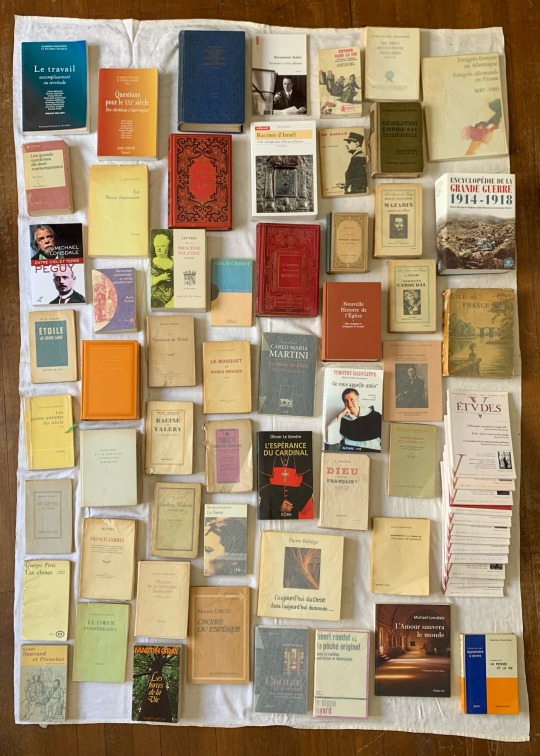
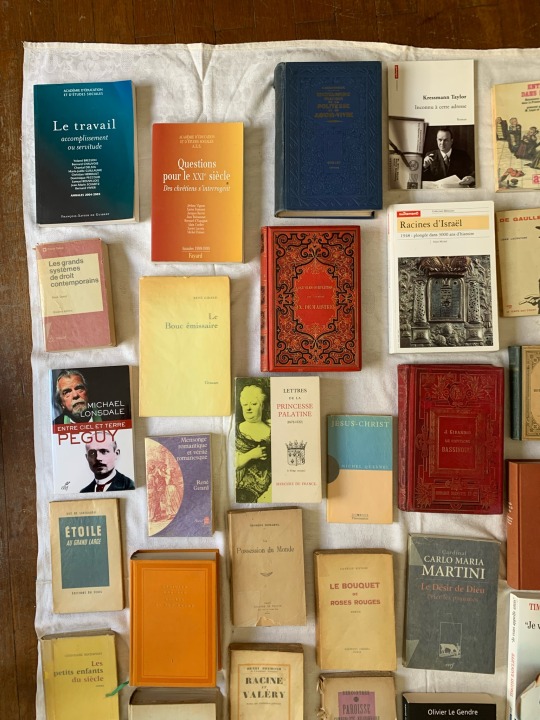

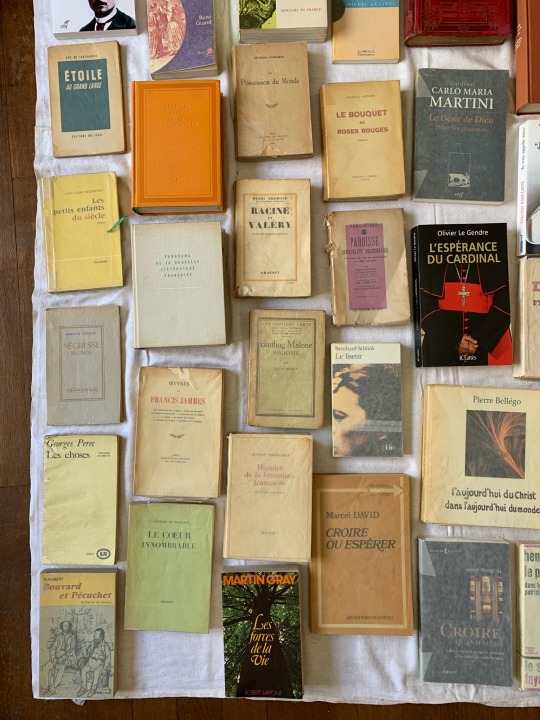

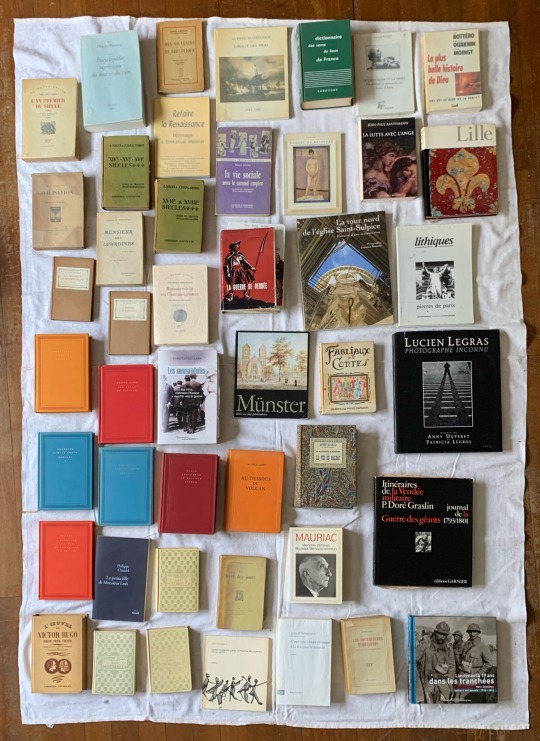
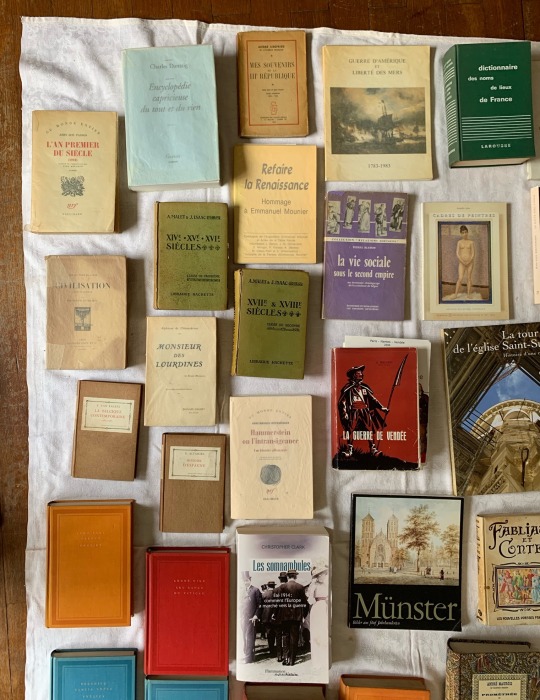
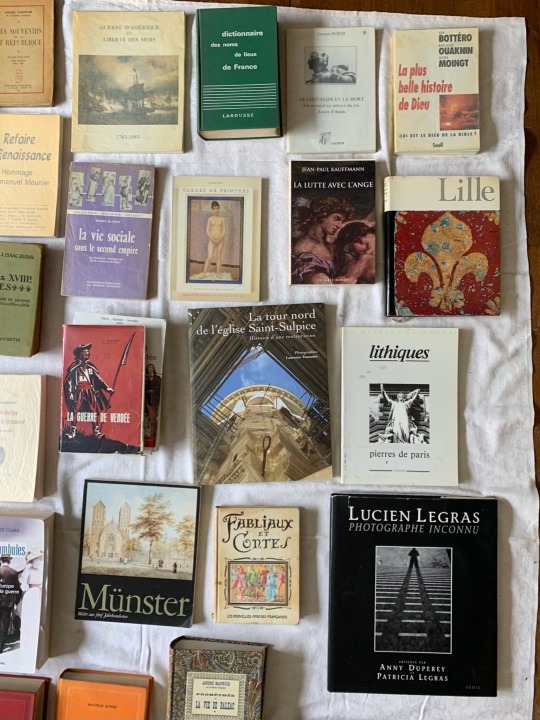


Bonjour à tous,
J’ai hérité d’une partie de la bibliothèque de mon arrière grand-père ! Grand germanophile et passionné d’Histoire. Il avait pour habitude d’offrir un de ses livres à chaque arrière petit-enfant pour Noël. Alors, pour perpétuer cette tradition à ma façon, voilà les livres que je ne lirai pas et que je peux vous donner s’il y en a qui vous intéresse !
Vous pouvez m’envoyer un message privé. N’hésitez pas à partager ce post et à en parler autour de vous ✨
Ps : quand il n’y en a plus, il y en a encore !
Je donne également :
Lettres et Propos sur l'Art, Nicolas Poussin
La tentation de l'Occident, André Malraux
Le Ciel et l'Arcadie, Maurice Denis
Face au drapeau, Jules Verne
Les vieux souvenirs, Prince de Joinville
Vielles Maisons - Vieux papiers, G. Lenotre
Le mystère français, Emmanuel Todd et Hervé Le Bras
Discours sur l'Histoire universelle, Bossuet
l'Histoire du sentiment religieux en France + La poésie pure, Henri Bremond
Histoire de France + Histoire de deux peuples, Jacques Bainville
Histoire contemporaine : philosophie mathématiques
Le XVIIème siècle, Lagarde et Michard
Récits du temps Mérovingien, Augustin Thierry
Histoire d'Allemagne, Charles Bonnefon
L'Allemagne, Edmond Vermeil
L'Allemand, Jacque Rivières
Français et Allemands, Louis Reynaud
La guerre sous les mers, Edmond Dellage
Précis de droit maritime, Georges Ripert
Chronique des Pasquiers, Georges Duhamel
Les coulisse de l'Histoire, Octave Homberg
Splendeurs et misère de M. de Chateaubriand
Des livres sur Charles de Gaulle ainsi que sur sa femme, des oeuvres d'André Maurois, Emmanuel Mounier, et Katherine Mansfield. Une grande collection de l'oeuvre de Jules Romain. Certains volumes de la collection Semaines sociales de France, ainsi que de l'A.E.S.
Et si vous parlez allemand, il y a toute une collection de livres allemands !
25 notes
·
View notes
Text
Part 4










Modern day Fancast for Henry V
Part 1 ( other parts in reblogs)
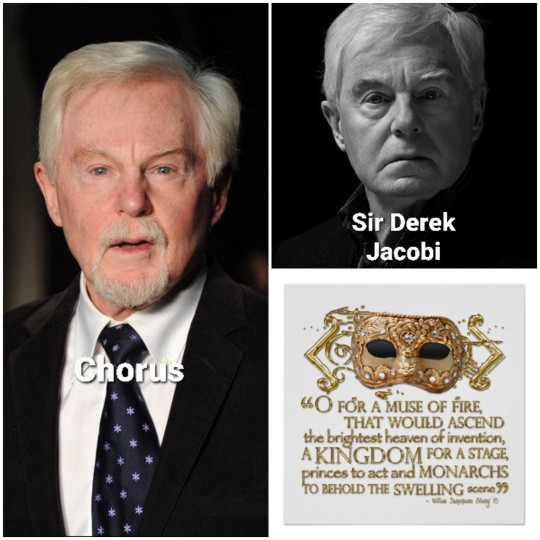

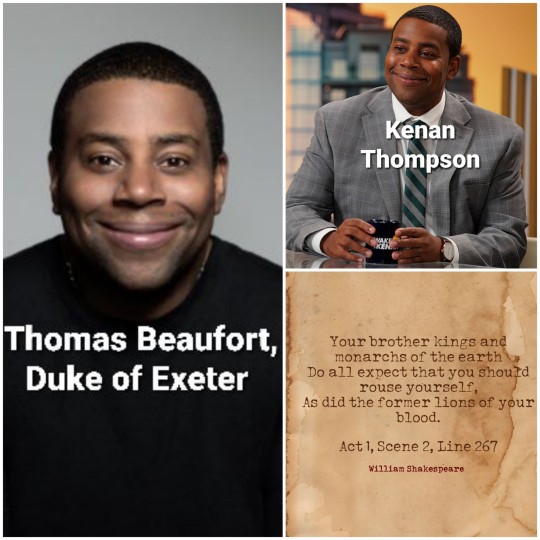
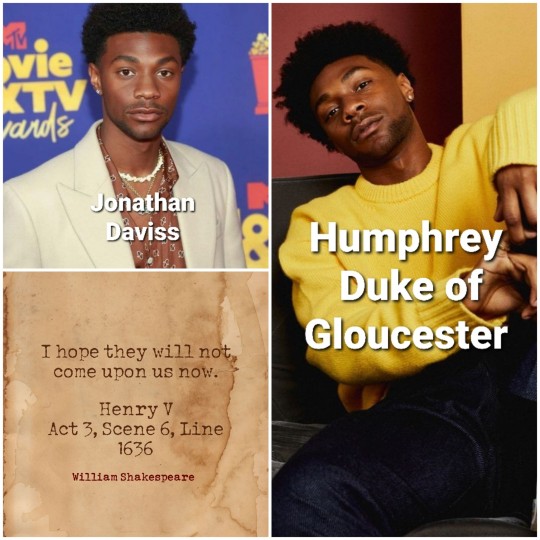
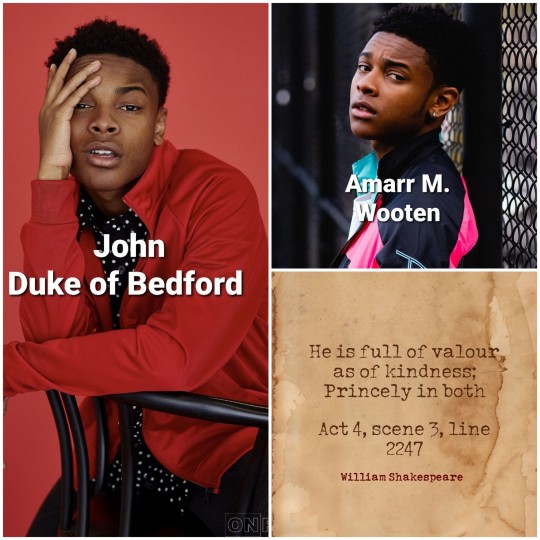





#Henry V#Shakespeare#theatre#plays#quotes#King Charles#alain delon#queen isabel#catherine deneuve#dauphin#romain Duris#constable of France#Vincent Cassel#katherine#marion cotillard#Alice#Judi dench#Duke of Burgundy#jean Dujardin#Duke of orleans#jamel Debbouze#duke of bourbon#Mathieu Kassovitz#governor of harfleur#gerard Depardieu
17 notes
·
View notes
Text
Yvré-l’Évêque - sightseeing around Le Mans
Our campground is about 7km from Le Mans. When you hear Le Mans you immediately think of the 24 hour car race, but there is so much more to Le Mans.
There was a welcome chill in the air when we first got up. Unfortunately that didn’t last long and as we pedalled off a little after 9am you could already feel the warmth.
This morning we rode our mountain bikes to the Le Mans 24h track and museum. It was a lovely ride there with a part of it through the Arche, a large national park they have here.
It was thrilling to be able to wander into the circuit area of the 24h. There were motor bikes zooming around the track so it had the required sound (well almost) and it was great to watch them banking into some of the corners. Between the circuit and the museum we were there for the better part of 2 hours.
Google maps sent us a different route back which ended up being not too bad as it took us through town and across the Pont Romain that our campground is named after.
It was getting pretty hot by the time we got back so a swim was definitely in order (and nice because there were way less people there).
The afternoon (what was left of it) passed quickly and soon we were getting ourselves dressed to head into Le Mans.
When you say Le Mans everyone immediately thinks of the race but the town has way more than that to offer. This was a mainstay of the Plantagenet family. Henry 2 was born here and Berengeria, Richard the Lionhearts Spanish wife whom he pretty much ignored their entire marriage, saw out her days ruling here and was loved by the town.
The Cite Plantagenet is amazing, all the old houses, narrow streets and then a big, beautiful cathedral. We caught the bus in and were dripping messes by the time we arrived. It hit 35-36 degrees and the bus wasn’t air conditioned 🥵
After a refreshing sorbet we headed off for a wander around and it didn’t disappoint. We had dinner in town and tried some of the local specialties, most notably rilletes Le Mans, delicious.
In the evening they do a vivid style light show in the buildings. I had been hoping for the historical depictions I had seen in the guide book but we seemed to get a lot of random faces beamed up onto the buildings. There were still some amazing displays, though so not really a disappointment.
Of course being so far north it doesn’t get dark until late so the show didn’t start until 10pm. By the time we were ready to head back the buses had stopped running so we hit the Uber app and were back in a jiffy. Still about 27 degrees as we headed to bed a bit after 11:30pm.
PS Lots of photos today and the order might be a little out.
2 notes
·
View notes